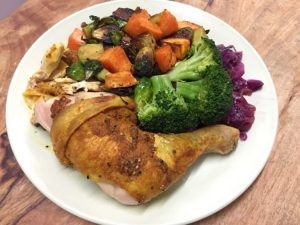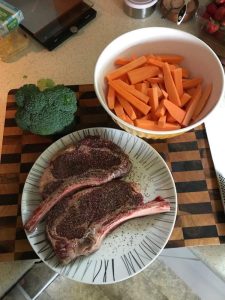For many people eating enough protein isn’t even a consideration for managing pain, or preventing muscle loss, or with helping us age in a healthy way but it could be a really important variable that we are missing (1, 2, 3). The current guidelines are a little confusing as they change as we age, and also change based on any medical conditions we may have, and they also change when we are lifting weights or being active. We do need protein to help us maintain muscle tissue as we age, and to help us build muscle as an adaptation to exercise, but how much protein we need depends a lot on our body size and also on how active we are (4).
 When people have muscle pain in daily life, or from exercising it is all too common to hear that health professionals, online gurus, or friends and family, will blame things like exercise technique, trigger points, adhesions, the type of exercise, posture, or muscle imbalances as a cause for the pain. They may even claim the muscles are “tight” and therefore need stretching, massage or some other form of manipulation in order to not feel pain in the muscle. Many of these ideas are unscientific at best, and at worst are encouraging a belief about a person’s body that will allow the person suggesting the idea to then sell a “solution” in the form of manual therapy, or a product or supplement, that then needs to be bought or administered regularly (5, 6, 7).
When people have muscle pain in daily life, or from exercising it is all too common to hear that health professionals, online gurus, or friends and family, will blame things like exercise technique, trigger points, adhesions, the type of exercise, posture, or muscle imbalances as a cause for the pain. They may even claim the muscles are “tight” and therefore need stretching, massage or some other form of manipulation in order to not feel pain in the muscle. Many of these ideas are unscientific at best, and at worst are encouraging a belief about a person’s body that will allow the person suggesting the idea to then sell a “solution” in the form of manual therapy, or a product or supplement, that then needs to be bought or administered regularly (5, 6, 7).
The facts are that for a muscle to be healthy we only need three things food (8), stimulus/load (9), and sleep/recovery (10). So instead of putting all your money into massage guns, spikey balls, foam rollers, appointments, and magnesium supplements we recommend first looking at your normal daily protein intake and seeing if some improvement can be had from some simple food choices.
The sensations muscles give us like pain, or that tight feeling, or fatigue, are sensations that are trying to help us protect the muscle. So a muscle will always feel tight when it is stretched to the end of it’s range of motion, and will always feel pain when it is stressed beyond its capacity, and will always feel fatigue when it is at the limit of its energy production systems (11).
A good step in working towards having healthy muscles is finding out how much protein you need to support your body, and how much extra protein you might need if you are participating in regular resistance exercises like lifting weights, or really any strenuous activity you may be performing.
Look below at the TABLE 1 and see if you can identify how many grams of protein you should be eating based on your lean body mass (your body mass in kg minus adipose tissue) or your ideal body mass (your body mass in kg of your goal). If you have a health condition it can be also good to look at TABLE 2 and see if the guidelines may be more specific for your condition in order to improve management of your disease.
TABLE 1: GENERAL POPULATION GUIDELINES BY AGE (SUMMARISED)
| Protein RDI | Optimal intake (g/kg/day) |
| Infant 0-12 months |
1.43-1.6 |
| Toddler 1-8 |
1.08 |
| Children 9-13 |
.87-.94 |
| Teenagers 14-18 |
.77-.99 |
| Young Adults 19-30 |
0.84 |
| Pregnant or breastfeeding |
.80-1.02 |
| Adults 30-70 |
.75-.84 |
| Elderly 70+ |
.8-1.5 |
| Paralympic Athletes |
> 1.2 |
| Athletes and active |
>1.2 |
General guidelines – https://www.eatforhealth.gov.au/nutrient-reference-values/nutrients/protein
TABLE 2: CLINICAL GUIDELINES
How much should we be eating?
 The guidelines as mentioned in Table 1 and Table 2 for some people may be difficult to achieve. Many people have barriers such as financial struggle and lack of time that significantly reduce our ability to action healthy behaviours. So if you are feeling this article is a little too much to take in I would stop reading here and first discuss the guidelines with your GP and potentially look at consulting with a Dietician before going any further.
The guidelines as mentioned in Table 1 and Table 2 for some people may be difficult to achieve. Many people have barriers such as financial struggle and lack of time that significantly reduce our ability to action healthy behaviours. So if you are feeling this article is a little too much to take in I would stop reading here and first discuss the guidelines with your GP and potentially look at consulting with a Dietician before going any further.
For those who want to keep reading we will be discussing if the guidelines are OPTIMAL or are they really THE BARE MINIMUM??
Research from 2013 in the Journal of the American Medical Directors Association suggested that for people over 65 (without disease) who are not active that the minimum should be 1.0-1.2 grams per kg of bodyweight per day and for people over 65 who are active (without disease) it should be >1.2 g/kg/day (21). The article goes on to recommend for people over 65 with acute or chronic disease that they should be ingesting 1.2 – 1.5 grams per kg of bodyweight per day.
More recent research from 2014, 2017 and 2018 also suggests just for maintaining health for aging people it is recommended to intake > 1.2 grams per kg, per day (22, 23, 24).
And for elderly people lifting weights regularly to optimise exercise adaptations we should be aiming for closer to 2.0 grams per kg, per day (27) or 40 grams per meal. Other research suggests that for healthy trained men and women that even >3.0 grams per kg, per day could provide additional benefits and has no deleterious effects (28).
So how do we get it?
 It is not easy and many people will feel overwhelmed but even just a 5-10 gram increase per meal over your current diet could be a good start. The most important thing is that a vegetarian or vegan meal is not just a normal meal with the meat removed. We must look at adding protein sources if we are taking meat out of our diets and making sure we aren’t missing those important amino acids by only ingesting one type of plant based protein, mix it up and combine as much as you can (25).
It is not easy and many people will feel overwhelmed but even just a 5-10 gram increase per meal over your current diet could be a good start. The most important thing is that a vegetarian or vegan meal is not just a normal meal with the meat removed. We must look at adding protein sources if we are taking meat out of our diets and making sure we aren’t missing those important amino acids by only ingesting one type of plant based protein, mix it up and combine as much as you can (25).
Try the following if you need some ideas to start:
- Healthy balanced diet of minimum 3 meals per day, don’t skip those main meals!
- Make our own food when possible
- 20-30 grams of protein per meal
- 40 grams of protein per meal if you are lifting weights regularly
- Protein based snacks such as cheese, yoghurt, oats, beef jerky, humus etc
- Pre-mixed nutritional drink options for elderly and infirm (sustagen or similar)
- Vegans should think about double or triple protein sources every meal (plus consider supplementation) so adding broccoli (or other veggies high in protein), and soy based products, and lentils and, chickpeas all in the one recipe if you can!
- Vegetarians should do double protein each meal (plus consider supplementation), such as mushrooms and halloumi for a bbq, or greek yoghurt and black beans with your taco night!
- Protein supplementation in the form of whey protein (isolate if possible), or for plant based options try pea, soy or hemp protein sources (isolate if possible) depending on allergies and tolerances. You may have to trial different ones to test digestibility for yourself as it can be very individual.
It is important to realise that grams per 100 grams of protein is not always the best comparison for making sure you’re getting enough. Not all protein sources are equally digestible and useable. However research indicates that a combination of plant sources in high amounts is comparable with animal based sources. No single plant based source will give us a complete Amino Acid profile in the way that animal products do (25).
Timing around exercise?
For many people it can be stressful trying to fit in exercise into their day let alone trying to get protein into their body a the right time. Carrying smelly protein shakers in your work bag or collecting them in your car is not ideal. Fear not because just getting enough protein in your normal breakfast, lunch and dinner is probably all you need.
A study by Schoefel & Aragon from 2017 showed that a window 2 hours before or after exercise was all you need to concern yourself with so eating breakfast before exercise, or eating dinner after a workout is all you need to do. The study also highlighted that total daily intake was more important than the timing of the protein intake around the workout. So there is no need to be getting up at midnight to eat ice cream, or be in a rush to get a protein shake in straight after gym (26).
Is it bad for our kidney’s?
It is commonly (and incorrectly) proposed that eating too much protein might be bad for our kidneys or bad for bone health. This widespread idea is not supported by the research and there are no negative effects of higher protein intake on renal function or bone health in humans (23, 28). If you refer back to the information in TABLE 2 above we can see that for those with early kidney disease who are not on dialysis that the guidelines are a little bit lower and for those on dialysis that they are a bit higher. So with respect to individual clinical needs a higher protein intake is not only healthy for people who don’t have kidney disease but it is still safe and recommended even for those who have compromised renal function.
Written by Kyle Richardson AEP
References:
- Noh H-M, Choi YH, Lee SK, Song HJ, Park YS, Kim N, Cho J. Association between Dietary Protein Intake, Regular Exercise, and Low Back Pain among Middle-Aged and Older Korean Adults without Osteoarthritis of the Lumbar Spine. Journal of Clinical Medicine. 2022; 11(5):1220. https://doi.org/10.3390/jcm11051220
- Jabed Mustafa , Dietary Protein and Preservation of Physical Functioning Among Middle-Aged and Older Adults in the Framingham Offspring Study, American Journal of Epidemiology, Volume 187, Issue 7, July 2018, Pages 1411–1419, https://doi.org/10.1093/aje/kwy014
- John E. Morley, et al., Nutritional Recommendations for the Management of Sarcopenia,Journal of the American Medical Directors Association,Volume 11, Issue 6,2010,Pages 391-396, ISSN 1525-8610, https://doi.org/10.1016/j.jamda.2010.04.014
- https://www.eatforhealth.gov.au/nutrient-reference-values/nutrients/protein
- Quintner JL, Bove GM, Cohen ML. A critical evaluation of the trigger point phenomenon. Rheumatology (Oxford). 2015;54(3):392-399. doi:10.1093/rheumatology/keu471
- Quintner, John, and Milton Cohen, ‘Myofascial pain syndrome: a bogus construct’, in Michael Hutson, and Adam Ward (eds), Oxford Textbook of Musculoskeletal Medicine, 2 edn, Oxford Textbook (Oxford, 2015; online edn, Oxford Academic, 1 Nov. 2015), https://doi.org/10.1093/med/9780199674107.003.0014, accessed 23 May 2023.
- Denneny, Diarmuid & Frawley, Helena & Petersen, Katrine & McLoughlin, Rebecca & Brook, Suzanne & Hassan, Salma & Williams, Amanda. (2018). Trigger Point Manual Therapy for the Treatment of Chronic Noncancer Pain in Adults: A Systematic Review and Meta-Analysis. Archives of Physical Medicine and Rehabilitation. 100. 10.1016/j.apmr.2018.06.019.
- Damas, F., Libardi, C.A. & Ugrinowitsch, C. The development of skeletal muscle hypertrophy through resistance training: the role of muscle damage and muscle protein synthesis. Eur J Appl Physiol 118, 485–500 (2018). https://doi.org/10.1007/s00421-017-3792-9
- Marcotte, G.R., West, D.W.D. & Baar, K. The Molecular Basis for Load-Induced Skeletal Muscle Hypertrophy. Calcif Tissue Int 96, 196–210 (2015). https://doi.org/10.1007/s00223-014-9925-9
- Dattilo M, Antunes HK, Medeiros A, et al. Paradoxical sleep deprivation induces muscle atrophy. Muscle Nerve. 2012;45(3):431-433. doi:10.1002/mus.22322
- Raja SN, Carr DB, Cohen M, et al. The revised International Association for the Study of Pain definition of pain: concepts, challenges, and compromises. Pain. 2020;161(9):1976-1982. doi:10.1097/j.pain.0000000000001939
- Gregorio L, Brindisi J, Kleppinger A, et al. Adequate dietary protein is associated with better physical performance among post-menopausal women 60-90 years. J Nutr Health Aging. 2014;18(2):155-160. doi:10.1007/s12603-013-0391-2 https://www.ncbi.nlm.nih.gov/pmc/articles/PMC4433492/
- Faria, S.L., Faria, O.P., Buffington, C. et al. Dietary Protein Intake and Bariatric Surgery Patients: A Review. OBES SURG 21, 1798–1805 (2011). https://doi.org/10.1007/s11695-011-0441-y
- Arved Weimann, Marco Braga, Franco Carli, Takashi Higashiguchi, Martin Hübner, Stanislaw Klek, Alessandro Laviano, Olle Ljungqvist, Dileep N. Lobo, Robert Martindale, Dan L. Waitzberg, Stephan C. Bischoff, Pierre Singer, ESPEN guideline: Clinical nutrition in surgery, Clinical Nutrition, Volume 36, Issue 3, 2017, Pages 623-650, ISSN 0261-5614, https://doi.org/10.1016/j.clnu.2017.02.013
- Nilsson A, Montiel Rojas D, Kadi F. Impact of Meeting Different Guidelines for Protein Intake on Muscle Mass and Physical Function in Physically Active Older Women. Nutrients. 2018; 10(9):1156. https://doi.org/10.3390/nu10091156
- Beasley, J.M.; Shikany, J.M.; Thomson, C.A. The role of dietary protein intake in the prevention of sarcopenia of aging. Nutr. Clin. Pract. 2013, 28, 684–690. https://doi.org/10.1177/0884533613507607
- Pfeiffer AFH, Pedersen E, Schwab U, Risérus U, Aas A-M, Uusitupa M, Thanopoulou A, Kendall C, Sievenpiper JL, Kahleová H, Rahélic D, Salas-Salvadó J, Gebauer S, Hermansen K. The Effects of Different Quantities and Qualities of Protein Intake in People with Diabetes Mellitus. Nutrients. 2020; 12(2):365. https://doi.org/10.3390/nu12020365
- Appel, Lawrence J.. The effects of protein intake on blood pressure and cardiovascular disease. Current Opinion in Lipidology 14(1):p 55-59, February 2003. https://journals.lww.com/co-lipidology/Abstract/2003/02000/The_effects_of_protein_intake_on_blood_pressure.10.aspx
- de Zwart, A.H., van der Leeden, M., Roorda, L.D. et al. Dietary protein intake and upper leg muscle strength in subjects with knee osteoarthritis: data from the osteoarthritis initiative. Rheumatol Int 39, 277–284 (2019). https://doi.org/10.1007/s00296-018-4223-x
- Lim, V.S. and Flanigan, M.J. (2001), Protein Intake in Patients with Renal Failure: Comments on the Current NKF-DOQI Guidelines for Nutrition in Chronic Renal Failure. Seminars in Dialysis, 14: 150-152. https://doi.org/10.1046/j.1525-139X.2001.00041.x
- Bauer J, Biolo G, Cederholm T, et al. Evidence-based recommendations for optimal dietary protein intake in older people: a position paper from the PROT-AGE Study Group. J Am Med Dir Assoc. 2013;14(8):542-559. doi:10.1016/j.jamda.2013.05.021 https://pubmed.ncbi.nlm.nih.gov/23867520/
- Deutz NE, Bauer JM, Barazzoni R, et al. Protein intake and exercise for optimal muscle function with aging: recommendations from the ESPEN Expert Group. Clin Nutr. 2014;33(6):929-936. doi:10.1016/j.clnu.2014.04.007 https://pubmed.ncbi.nlm.nih.gov/24814383/
- Traylor DA, Gorissen SHM, Phillips SM. Perspective: Protein Requirements and Optimal Intakes in Aging: Are We Ready to Recommend More Than the Recommended Daily Allowance?. Adv Nutr. 2018;9(3):171-182. doi:10.1093/advances/nmy003 https://www.ncbi.nlm.nih.gov/pmc/articles/PMC5952928/
- Jäger R, Kerksick CM, Campbell BI, et al. International Society of Sports Nutrition Position Stand: protein and exercise. J Int Soc Sports Nutr. 2017;14:20. Published 2017 Jun 20. doi:10.1186/s12970-017-0177-8 https://jissn.biomedcentral.com/articles/10.1186/s12970-017-0177-8
- Hoffman JR, Falvo MJ. Protein – Which is Best?. J Sports Sci Med. 2004;3(3):118-130. Published 2004 Sep 1.
- Schoenfeld BJ, Aragon A, Wilborn C, Urbina SL, Hayward SE, Krieger J. Pre- versus post-exercise protein intake has similar effects on muscular adaptations [published correction appears in PeerJ. 2017 Aug 1;5:]. PeerJ. 2017;5:e2825. Published 2017 Jan 3. doi:10.7717/peerj.2825 https://pubmed.ncbi.nlm.nih.gov/28070459/
- Breen, L., Phillips, S.M. Skeletal muscle protein metabolism in the elderly: Interventions to counteract the ‘anabolic resistance’ of ageing. Nutr Metab (Lond) 8, 68 (2011). https://doi.org/10.1186/1743-7075-8-68 https://nutritionandmetabolism.biomedcentral.com/articles/10.1186/1743-7075-8-68#citeas
- Antonio J, Ellerbroek A, Silver T, et al. A high protein diet (3.4 g/kg/d) combined with a heavy resistance training program improves body composition in healthy trained men and women–a follow-up investigation. J Int Soc Sports Nutr. 2015;12:39. Published 2015 Oct 20. doi:10.1186/s12970-015-0100-0 https://www.ncbi.nlm.nih.gov/pmc/articles/PMC4617900/

